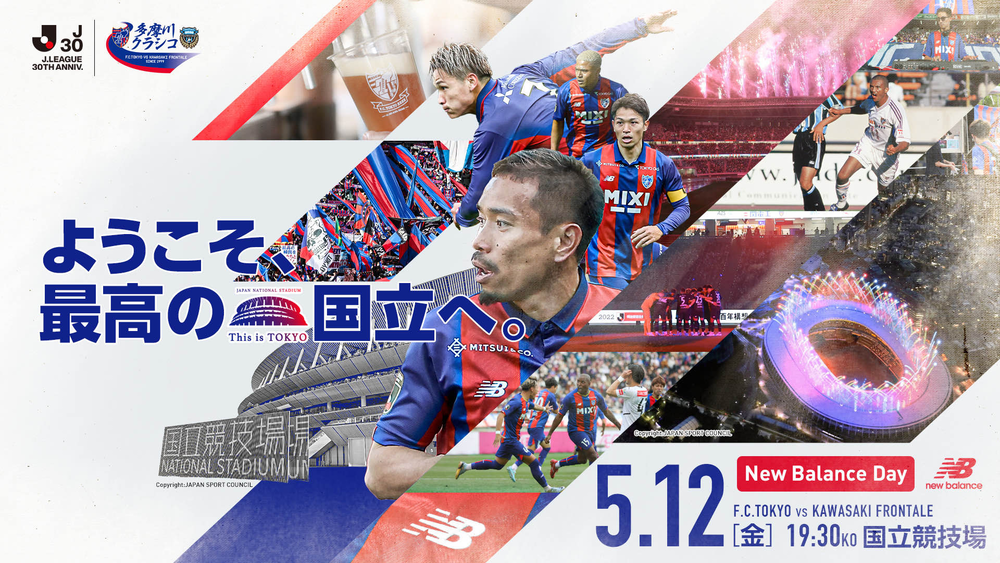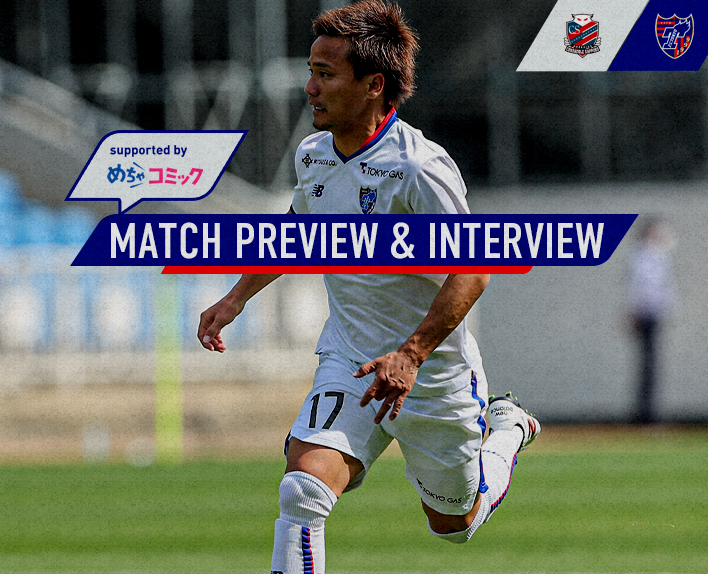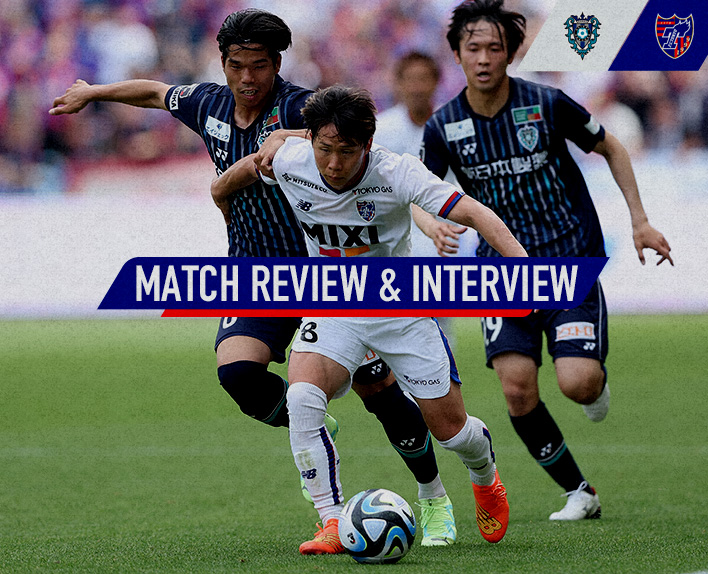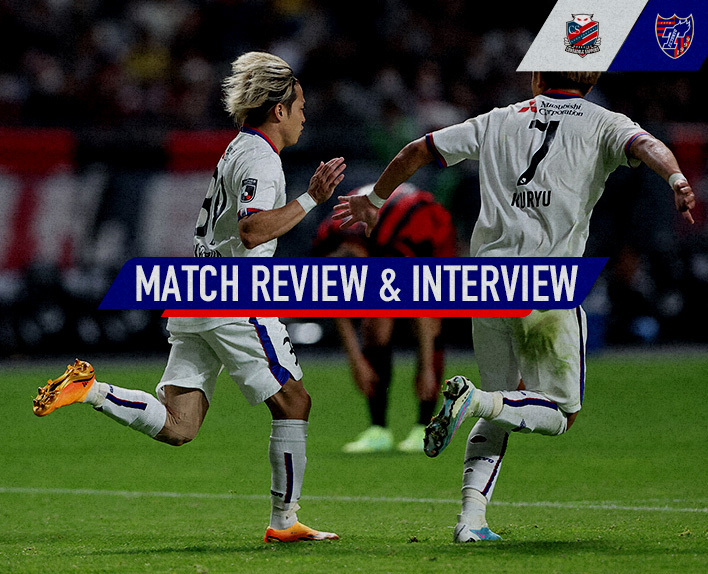Due to production scheduling, the MATCH PREVIEW & INTERVIEW for the Hokkaido Consadole Sapporo match on May 6th (Saturday) will be on break.
The next Mecha Koma will be the MATCH PREVIEW & INTERVIEW for the Kawasaki Frontale match on May 12 (Fri).
<Previous Match - Avispa Fukuoka Match Review>
Is Fukuoka a cursed ground for Tokyo? Although they won in the Levain Cup during the 2016 season, they have not won a single league match since their first game in Fukuoka in the 2000 season.
On this day, we arrived in Fukuoka with a good momentum, having won two consecutive league matches and three consecutive official matches, but ended up losing by a one-point margin. Moreover, in the second half, we were unable to maintain possession of the ball or launch counterattacks against Avispa Fukuoka's strong start and well-organized defense and quick attacks, leaving us with many issues to address in terms of performance.
That said, it is not true that there was no chance of winning throughout the 90 minutes. In the 19th minute of the first half, a play was initiated on the right side, where Teruhito NAKAGAWA connected with Ryoma WATANABE, who cut in towards the center and took a shot that hit the post. Kuryu MATSUKI also created a situation where he broke into the penalty area, just a step away, showing a willingness to connect individual ideas to approach the goal against a defensive opponent.
Unfortunately, in the second half, the ball did not settle down, and we were pushed back by the opponent's momentum in the duels. We were unable to build on the good flow we had seen in the first half. Even in the closing stages, while chasing the lead, Fukuoka's quick pressure on the ball side prevented us from effectively delivering the ball into the opponent's territory.
Before discussing style, the fundamental principle of football is to fight, to have a sense of challenge in winning against the opponent in front of you. After a limited adjustment period of two days, the team flies to the northern land.
<Preview>
For Tokyo, this is a series of matches with three days and two days in between, and it is also a tough away trip involving long travels to Fukuoka and Hokkaido. On the other hand, for Hokkaido Consadole Sapporo, this is a match played at home with only two days in between. While the time for preparation is equal, considering the travel and other factors, it is a fact that Sapporo has an advantage in terms of player condition.
When considering Sapporo's soccer style, the difference in conditioning becomes a greater concern looming over Tokyo. In defense, they tend to mark players man-to-man and challenge with high intensity duels. In attack, they surge into Tokyo's territory with coordinated passing and direct play calculated from the goal.
It can be said that it is a very tough and challenging opponent in terms of intensity and condition to compete after two days.
While both sides can express their inclination as "offensive," the implications of that are different. Tokyo wants to control the match and dictate both offense and defense, while Sapporo lines up energetic players in the front and challenges with an unwavering approach even in open play. Their attitude of going straight for the goal is reflected in their league ranking of 3rd with 20 goals.
On the other hand, the defense has concerns, as it has conceded 21 goals, ranking third worst, due to a greater emphasis on attack. For Tokyo, it is essential to accurately assess Sapporo's approach, neutralize the opponent's attacking momentum, find space, and aim for the goal with precise choices by alternating between quick and slow attacks.
[Interview with Coach Albert PUIG ORTONEDA]
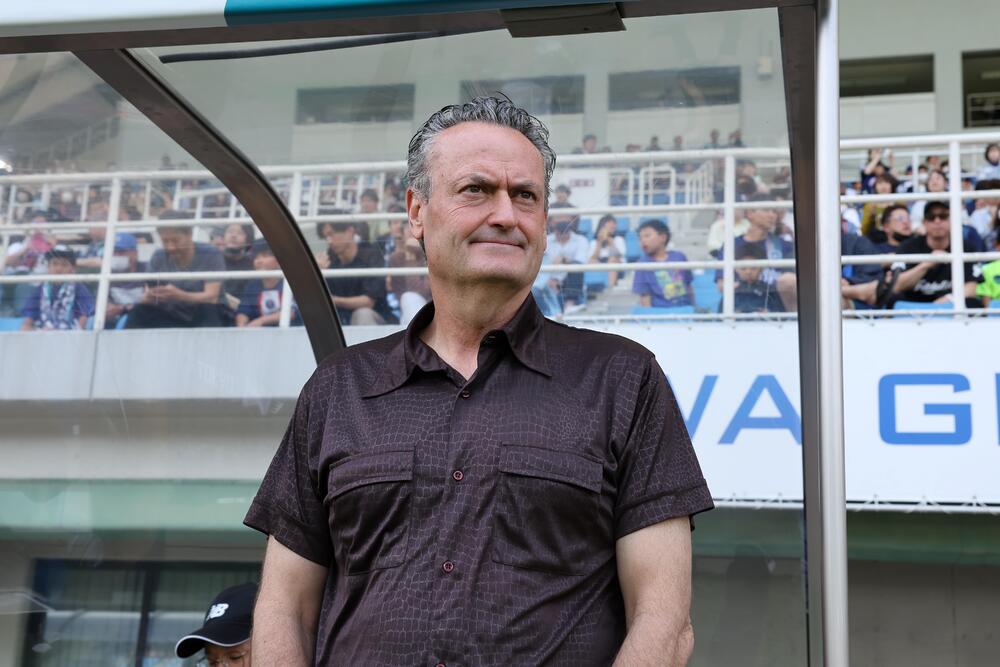
Q: The soccer styles of Avispa Fukuoka and Hokkaido Consadole Sapporo are quite different. How will you respond to this?
A, this three-match series against Albirex Niigata, Fukuoka, and Sapporo will be a clash with teams that have completely different styles. Sapporo is characterized by a more intense man-to-man defense. Taking that into account, we want to effectively utilize our strengths according to the situation. In particular, there is a possibility that space will open up. I believe it is important whether we can exploit that effectively.
Q: It is expected that the match will require movement back and forth. Are you considering placing more offensive players on the sides?
A, considering our style, we require a more attacking type for the full-backs. I believe this should always be the case, regardless of the opponent. However, we must wisely decide who to use based on the characteristics of our existing players and those of the opposing team. A clear trend is that matches where the full-backs participated in the attack created more decisive chances. A typical example of when this was not the case was the last match against Fukuoka.
Q: How do you want to connect the issues from the Fukuoka match to the Sapporo match?
A, we were unable to create any decisive chances in the second half against Fukuoka. There were also many ball losses in midfield. Our awareness of moving towards the goal was weak. The goals we conceded came from our own mistakes. We often lost in one-on-one situations. It was a tough 45 minutes. I also told the players that we cannot continue to have matches like that.
Q: In aiming for an attacking style of football, there were several matches this season that ended without scoring, including the match against Fukuoka. How do you perceive that?
A, I am focusing on whether I can score goals and how many decisive chances I can create. I don't care at all about the number of shots. It's questionable whether any of those had the potential for a goal. What I consider important is the number of decisive chances. There have been several matches this season where the number of decisive chances was low. I see that as an important challenge. On the other hand, when we can create multiple decisive chances, I generally think we have a higher chance of winning the match, and that is where I focus. Regarding the second half of the Fukuoka match, the midfield was unable to dominate the game, and as a result, the full-backs couldn't participate in the attack. I believe that was also a factor in not being able to create many decisive chances.
Q, how do you feel about the depth of the sideback position due to Hotaka NAKAMURA's injury absence?
A, in modern football styles, it has become increasingly difficult over the past few years to discover high-quality right fullbacks who can perform globally. While there is talent available for left fullbacks, good players have not emerged as much on the right side. Right fullbacks are required to have high abilities both defensively and offensively, to take positions centrally as well, and to possess tactical intelligence in modern football. At FC Barcelona's academy, they have utilized wingers as fullbacks and defensive midfielders as center backs to field more attacking players in the defensive line. Do you know which position Jordi Alba played until he was about 20 years old? He was deployed in a second-line position, like Ryoma WATANABE. If you need technically skilled players in the defensive line, FC Barcelona's academy has practiced deploying players who played forward positions when they were younger. Kashif BANGNAGANDE is a player who can also play as a winger without any problem. I believe modern football demands such fullbacks.
Q: I think there were moments in the first half of the Fukuoka match where the training we have been working on was utilized. There was Ryoma WATANABE's shot, and there was a similar scene with Kuryu MATSUKI as well. Seeing those moments, don't you think we can see the progress we've made?
A, improvement is still needed in that area. As I mentioned earlier, I do not focus on the number of shots, and I have doubts about interpreting it as an important metric. What matters is whether it was a chance that could potentially lead to a goal. Please recall the match against Kashiwa Reysol. There was a moment when Diego OLIVEIRA was clearly free and only needed to push the ball into the goal, but he missed and the shot went off target. That is counted as an off-target shot and interpreted as a clear chance in the statistics. On the other hand, even if a low-probability long shot from nearly 30 meters is taken and caught by the goalkeeper, it is counted as an on-target shot. In that sense, I do not pay attention to the numbers of on-target or off-target shots. The possession rate is the same. It is not the overall possession rate that is important, but the zone in which possession was held. Various numbers are analyzed, but none of them lead to accurate interpretations.
[Player Interview]
<Shuhei TOKUMOTO>

Q: It's a tough schedule with consecutive matches, but how is your condition?
A, I haven't played the full 90 minutes in both matches, but my body is ready, and I want to show that we can win even if we have to move to the west or north. In the match against Avispa Fukuoka, I made the fans and supporters sad, so I am well prepared to ensure that we can all celebrate together on the northern land.
Q: It will be a different style opponent than Fukuoka.
A, since there are many players who can take fluid positions, I believe that if we express various ideas, we can penetrate towards the goal. I think if everyone becomes more proactive in their shooting awareness, it will lead to scoring, whether it goes directly in or through a second ball, so I want us to align our direction and work together.
Q: Looking at the number of shots in the Fukuoka match, will the attack be a concern?
A, in the match between Sanfrecce Hiroshima and Albirex Niigata, they won despite having few shots, so if we couldn't do that in the Fukuoka match, it's understandable that people will say something. I also took a shot in the match against Shonan Bellmare, but we need someone to create an opportunity to increase the number of shots. Therefore, I want to continue doing what I can.
Q: When moving the ball, I think you change its trajectory with your toes, but does that mean that such plays have started to emerge as players gain more confidence in J1?
A, I think I can cancel my play because I can see it. I don't think I'm the type of player who aggressively takes on challenges like Kashif BANGNAGANDE, but I have confidence in the footwork skills I've honed at FC Ryukyu and Fagiano Okayama, which allows me to see my surroundings. I'm not sure if it's because I've gotten used to it, but I believe that's my strength.
Q: The side backs are merging with the central players without separating, making the position changes smoother. How well do you feel this is aligning with the ideal form?
A, I believe that from now on, it's about quality. The more I think about it, the more ideals I have, but if we can increase the number of times we reach the goal due to good combinations and quality rotations, I think it will connect to what Coach Albert PUIG ORTONEDA wants to achieve, as well as lead to victories and goals. I feel like I'm growing with each match.
Q: I feel that Ryoma WATANABE is a player who is quite suited to the style of football that coach Albert PUIG ORTONEDA wants to play. The combination is smooth, and I believe that player Tokumoto also feels suited to the current style. What do you think?
A, I am not as skilled as Watanabe, but I believe that because I am looking around and making solid judgments, I am able to play well in close proximity and have a good synergy. When I faced Niigata, managed by Coach Albert PUIG ORTONEDA, two seasons ago, I felt that I could compete if I played here. Last season, I watched many of Tokyo's matches and had a desire to play the style of football that Coach Albert PUIG ORTONEDA promotes. The training that was planned with that in mind is benefiting me now. I have not yet become a player that others want to use, so I want to approach my practice positively.
Q: I feel that when Tokumoto is substituted, he communicates with everyone entering the pitch and acts as a lubricant.
A, I could only support, so I was really frustrated that we conceded a goal after I was substituted. Once substituted, there's nothing I can do, so I have the feeling of relying on my teammates. An experienced player came in to replace me, and I intended to pass on the power I had left.
Q: At the time of joining, you mentioned having confidence that you could compete in J1. Now that your opportunities to play have increased, is there anything new that you have come to see?
A, I realized that I am not the type to do things alone, but my strengths come out when I work with skilled players. I believe that my current state is due to the increased opportunities to team up with Watanabe and learning about positioning to bring out his skills by watching the plays of Yuto NAGATOMO and Yoshifumi. I think I need to do it with confidence. I am doing it with confidence and a mentality that doesn't care even if I get scolded.
Q: Is there something you are looking ahead to?
A, I believe that players who do not get injured are valuable within the team, so we focus on stretching and care. Also, I think I cannot surpass player Yoshifumi unless I become part of the Japan national team, and I believe there is no path to being a starter in Tokyo. However, I want to continue to improve through friendly competition. When player Yoshifumi is on the field, I feel I can learn from him, and I also have the mindset that I can perform well when I get my chance, so I think we have a good relationship.
Q: Earlier, there was a discussion about quality. What is important for the team and individuals to improve quality?
A, I think it's communication. If more players can speak their minds regardless of age, I believe it will improve even more. The other aspect is soccer skills, so it's about whether each individual can focus on the quality of each pass during practice. We are able to practice daily to ensure that this concept is ingrained, and I want to show that in matches.
Q: There have been more good goals, but is the team starting to create the same picture together?
AIf we can bring it to the point of deciding whether to finish or not, I believe it comes down to the skills and choices of the player finishing. The scenes where everyone draws the same picture and scores are increasing, so I want to continue that.
Q: Please share your enthusiasm for the match against Hokkaido Consadole Sapporo.
A, it's a one-on-one opponent, and if we can't compete for the ball, we won't win. We want to thoroughly apply the lessons learned from the Fukuoka match and ensure we don't lose in battles. After that, we have a match at the wonderful Japan National Stadium, so we want to win and return with our fans and supporters.
